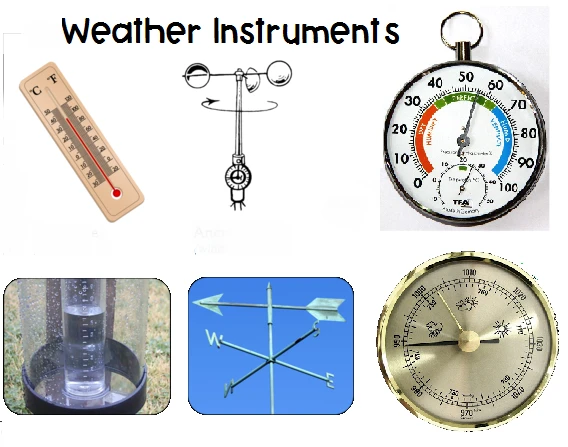
# Weather Instruments: Tools for Measuring Atmospheric Conditions
## Introduction to Weather Instruments
Weather instruments are essential tools used by meteorologists, scientists, and weather enthusiasts to measure various atmospheric conditions. These devices help us understand and predict weather patterns, which is crucial for agriculture, aviation, and daily life planning.
## Common Types of Weather Instruments
### Thermometer
The thermometer is perhaps the most recognizable weather instrument. It measures air temperature, typically using mercury or alcohol in a glass tube or digital sensors in modern versions.
### Barometer
A barometer measures atmospheric pressure, which is crucial for weather forecasting. Changes in pressure often indicate approaching weather systems:
– Rising pressure usually means fair weather
– Falling pressure often signals storms or precipitation
### Anemometer
This instrument measures wind speed. The most common type has three or four cups that rotate with the wind, with the rotation speed converted to wind speed measurements.
### Hygrometer
Hygrometers measure humidity – the amount of water vapor in the air. There are several types:
– Mechanical hygrometers use human or animal hair
– Electronic hygrometers use capacitive or resistive sensors
– Psychrometers use wet and dry bulb thermometers
### Rain Gauge
A simple but important instrument, the rain gauge measures precipitation amounts. Modern versions can automatically record and transmit data, while traditional ones require manual measurement.
## Advanced Weather Instruments
### Weather Balloons
These carry instrument packages called radiosondes high into the atmosphere, measuring temperature, humidity, pressure, and wind at various altitudes.
### Weather Radar
Radar systems detect precipitation, its motion, and intensity. Doppler radar can also detect wind speed and direction within storms.
### Weather Satellites
Orbiting satellites provide comprehensive views of weather systems, cloud cover, and other atmospheric phenomena on a global scale.
## Importance of Weather Instruments
Accurate weather data collected by these instruments helps in:
– Severe weather warnings
– Climate change research
– Agricultural planning
– Aviation safety
– Energy production planning
## Maintaining Weather Instruments
For accurate measurements, weather instruments require:
– Regular calibration
– Proper placement (away from buildings or trees)
– Protection from direct sunlight (for some instruments)
– Routine cleaning and maintenance
## Conclusion
From simple thermometers to sophisticated satellite systems, weather instruments provide the data needed to understand our atmosphere. As technology advances, these tools continue to improve, offering more precise measurements and better weather predictions for everyone.
Keyword: instruments of the weather
Recent Comments